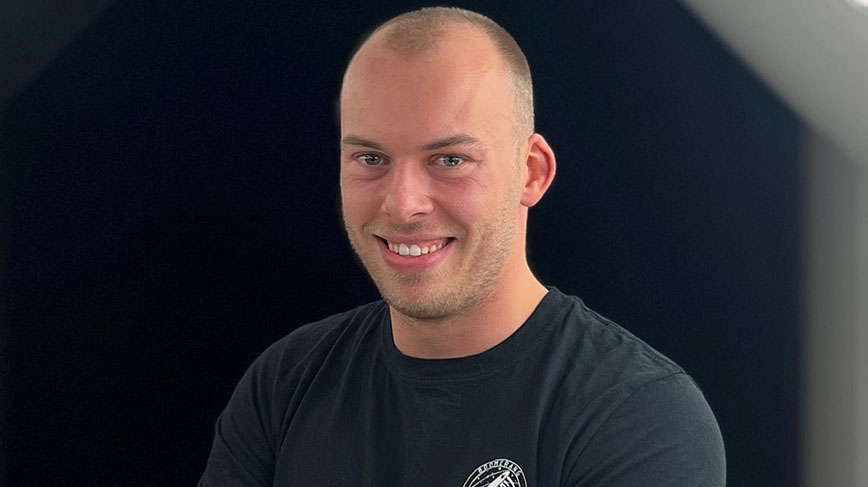Hello there alum Malte Gleim...

...who, with funding from KTH and others, was able to realise the Boomerang rocket project.
“I want to thank the Opportunities Fund and all donors for their generous support. It has been crucial in helping us realise this,” he says by phone from Germany.
After two years in the Naval Architecture Master's programme, Malte Gleim, 26, is back in his home country. He explains how Rexus/Bexus, which includes Boomerang, allows students from European universities and colleges in Europe to conduct scientific and technical experiments on research rockets and balloons.
The Rexus/Bexus programme is realized under a bilateral Agency Agreement between the German Aerospace Center (DLR) and the Swedish National Space Agency (SNSA). Experts from organisations such as the European Space Agency (ESA), provides technical support to student teams throughout the project.
How would you describe your project?
“Boomerang was selected by Rexus/Bexus and aims to develop a return to launch site function for rocket units launched from high altitude in flight. Instead of a parachute, it uses a paraglider that can be steered in the desired direction to make it easier to find. Last year, our team was able to finalise the design of the project and turn it into reality. It was showcased during several reviews in Bremen and Munich in December/January.”
“During the project, we learnt what it takes to design and manufacture a space project ourselves. It is now in its final phase, with a launch from Esrange planned for mid-March, and some of the team will soon be travelling to Kiruna.”
How will the project benefit KTH in the future?
“The idea is that Boomerang's solution will make it possible for future KTH experiments launched on board sounding rockets to be retrieved without the need for a helicopter expedition. This will significantly reduce the time and cost of rocket launches at the experimental level, as well as reduce the environmental impact and the risk of lost devices.”
Tell us about the support from the KTH Opportunities Fund and what it meant to you?
“The majority of the parts required were manufactured internally by the team at KTH, while larger and more complex parts that the team could not manufacture themselves were outsourced to external service providers supported by the Opportunities Fund and others.”
Why did you choose Sweden for your studies?
“I pursued the master programme in Naval Architecture since I have a passion for sailing and have always been interested in ship design and construction. The master's programme is available in several other countries, but at KTH you can choose to specialise in project management. The opportunity to combine it with traditional engineering education made me want to go abroad.”
“I enjoyed it very much and left KTH in June 2023 with a heavy heart. The studies were more flexible compared to what I had experienced before and I appreciated the international atmosphere, and the opportunity to participate in a project like this alongside the courses.”
What are your future plans?
“I have just started working as a consultant in project management towards the automotive, aerospace and marine industry. I’m looking forward to gain more experience over the coming years and I’m happy that I can further pursue my interest in project management”, Gleim says.
Text: Lars Öhman
Photo: Anna Bogacova
